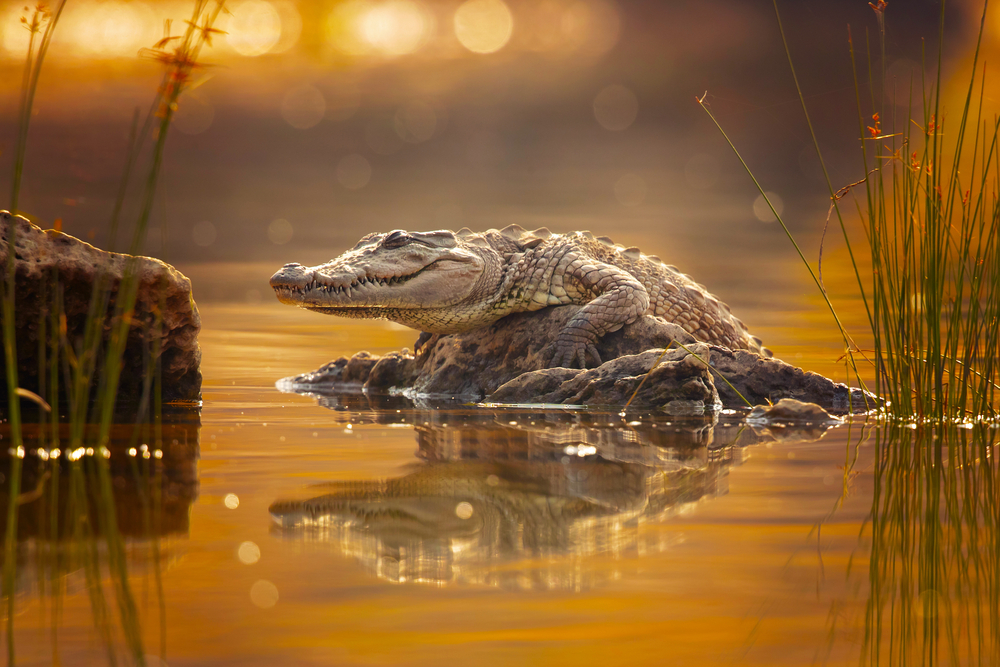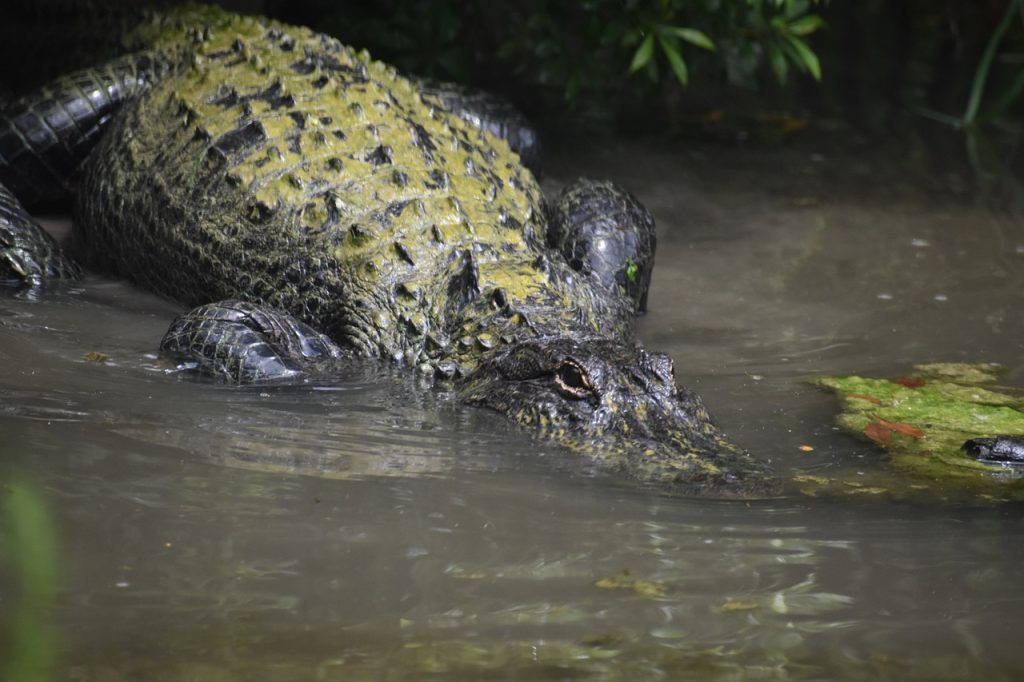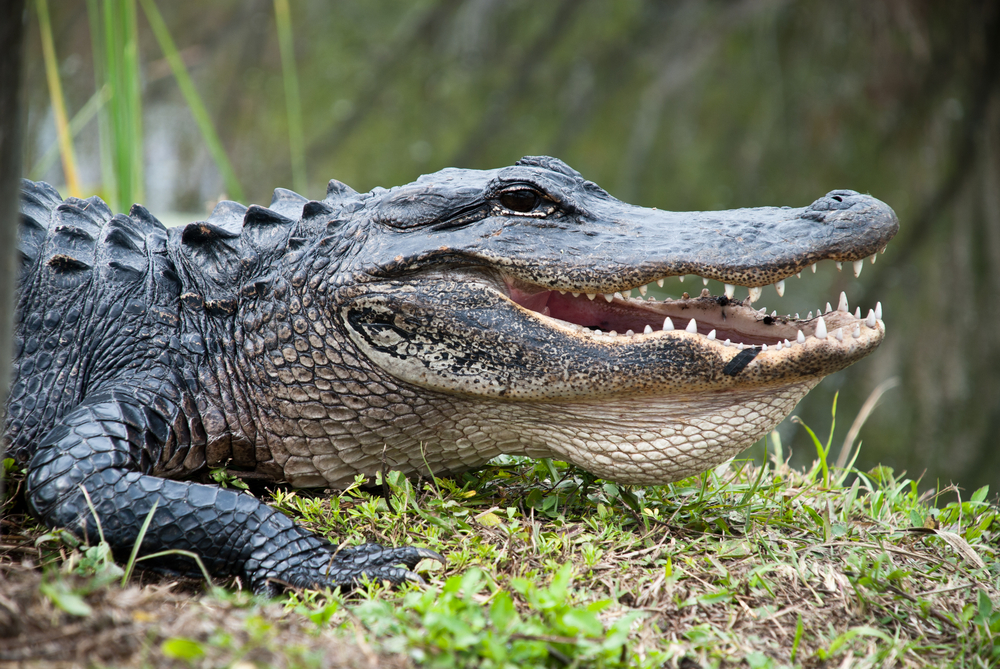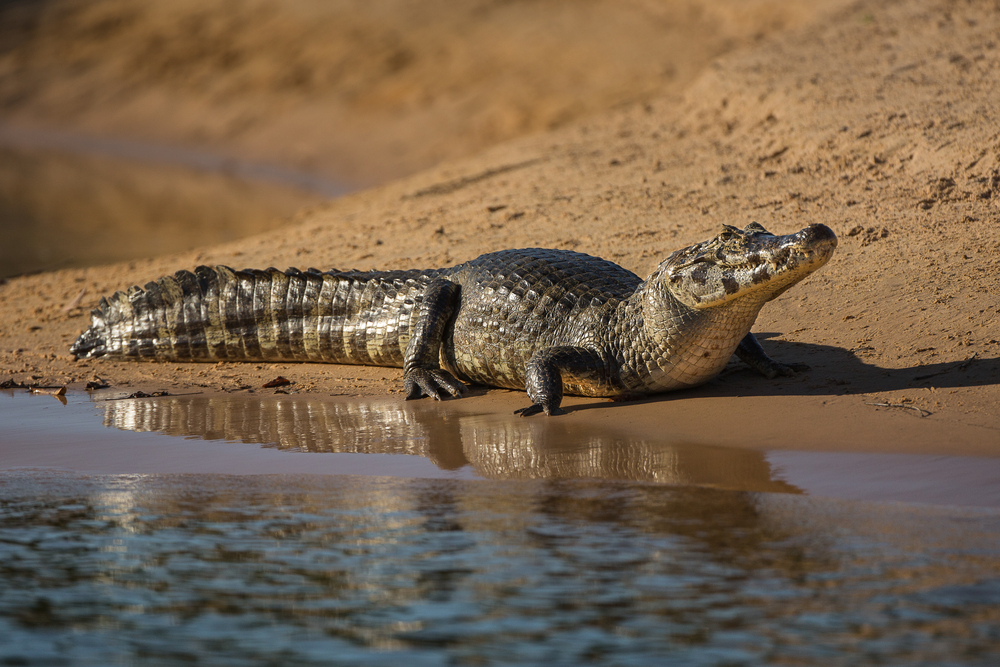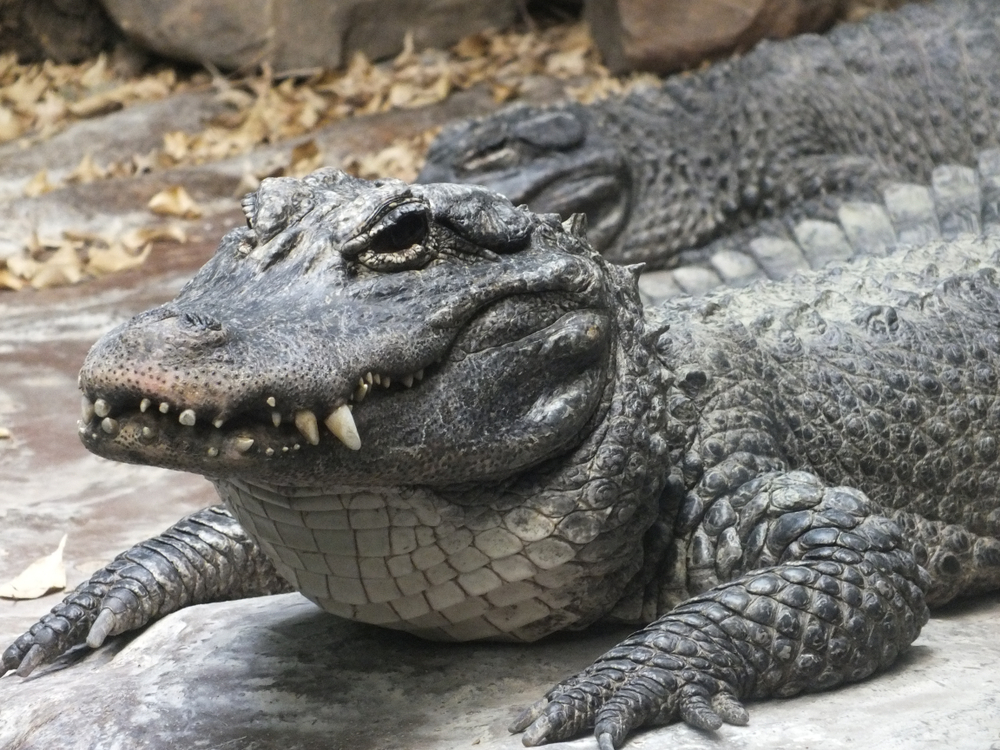Uniqueness
Broad Snout Among Crocodiles:
The Mugger Crocodile is one of the few crocodile species with a broad, U-shaped snout—a trait more commonly associated with alligators. This adaptation allows it to crush hard-shelled prey like turtles and mollusks, setting it apart from other Crocodylus species, which generally have narrower, V-shaped snouts.
Exceptional Habitat Flexibility:
Muggers are highly adaptable and found in a wide range of freshwater habitats across the Indian subcontinent, including:
-
Rivers, lakes, and marshes
-
Man-made reservoirs, irrigation canals, and village ponds
-
Occasionally even brackish estuaries (though they avoid full marine environments)
This flexibility allows them to live near human settlements, often more successfully than other crocodilian species.
Expert Burrowers:
During dry seasons or droughts, Muggers dig deep burrows into riverbanks or muddy slopes—some up to 20 feet long. These dens provide refuge from heat and dehydration and are often reused for years. This burrowing behavior is more advanced than in most other crocodile species.
Most Terrestrial of Crocodilians:
Although aquatic by nature, the Mugger is considered the most terrestrial crocodilian. It regularly travels overland between water bodies, especially during the monsoon and dry seasons. This has helped it colonize isolated wetlands and man-made tanks far from permanent rivers.
Cultural and Religious Significance:
In India and Nepal, the Mugger is featured in folklore, temple symbolism, and village stories. In places like the Crocodile Temple at Bhitarkanika and Lake Puthia in Bangladesh, muggers are revered and protected as sacred animals, often fed by devotees.
Successful Reintroduction and Conservation Model:
The Mugger has been one of the most successfully conserved crocodilian species in Asia. Captive breeding and reintroduction programs (notably in India and Sri Lanka) have stabilized or increased populations in several regions. The species is now locally abundant in parts of Gujarat, Maharashtra, and Tamil Nadu.
Relatively Docile Temperament:
Compared to the more aggressive Saltwater or Nile Crocodiles, muggers tend to be less confrontational toward humans. While still dangerous and capable of attacks, especially in defense of nests, they are less notorious for unprovoked aggression—contributing to their coexistence near human settlements.



































































